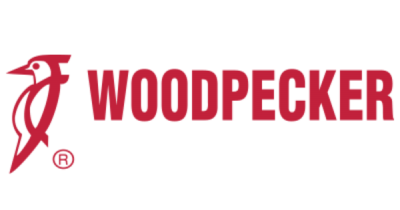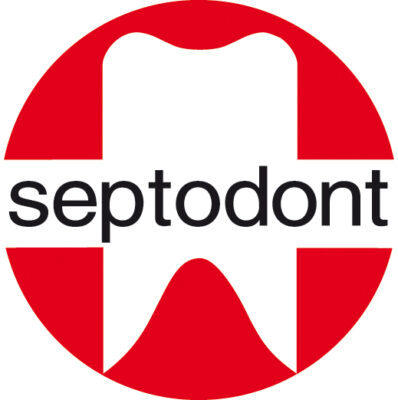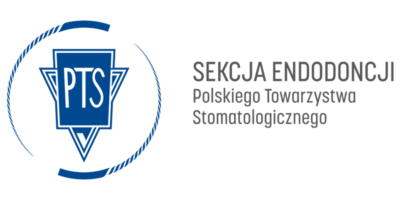Program

Metallurgy, the evolution of instruments, and presenting the advantages of HT files
Root canal treatment is a critical aspect of endodontic therapy, aiming to eliminate infection and preserve the natural dentition. The evolution of root canal instruments has witnessed significant advancements, particularly in metallurgy and heat treatment techniques, revolutionizing the process of cleaning and shaping root canal complexities. This lecture aims to explore the role of metallurgy, the evolution of instruments, and highlight the advantages of heat treated root canal rotary instruments in enhancing the efficacy of cleaning and shaping intricate root canal systems.
Metallurgy has played a pivotal role in improving the mechanical properties of root canal instruments. The development of advanced alloys, such as nickel-titanium (NiTi), has enabled the production of highly flexible and durable instruments. These alloys exhibit shape memory and superelasticity, allowing efficient negotiation of curved canals and intricate anatomy. The lecture will delve into the fundamental principles of metallurgy and highlight the influence of alloy composition, grain structure, and heat treatment on the properties of root canal instruments.
The evolution of root canal instruments has seen a paradigm shift from traditional stainless steel hand files to sophisticated rotary systems. This lecture will provide an overview of this evolution, tracing the advancements in file design, cross-sectional geometry, and taper. Special emphasis will be placed on the introduction of heat treated root canal rotary instruments, which exhibit enhanced flexibility, resistance to cyclic fatigue, and improved cutting efficiency. The lecture will discuss the significance of progressive taper, multiple cutting edges, and advanced manufacturing techniques in shaping intricate root canal complexities.
Furthermore, the lecture will present the advantages of heat treated root canal rotary instruments in the process of cleaning and shaping root canal complexities. Scientific research studies will be cited to support the claims, highlighting improved debris removal, better dentin conservation, and reduced procedural errors. The benefits of heat treatment, such as increased flexibility, enhanced resistance to torsional and cyclic fatigue, and improved cutting performance will be elucidated.
In conclusion, this lecture will provide a comprehensive overview of the influence of metallurgy and the evolution of root canal instruments on the process of cleaning and shaping root canal complexities. The advantages of heat treated root canal rotary instruments will be emphasized, shedding light on their impact on enhancing the efficacy and success of root canal treatments. The information presented will enable clinicians to make informed decisions regarding instrument selection, leading to improved patient outcomes in endodontic therapy.

Azure and Amber: The Endostar colours that best adapt to the different root canal anatomies and the different needs of endodontists
Endodontics has developed rapidly in recent years, showing a profound transformation especially at the instrumental level with the introduction of constantly evolving materials and operating methods. All this has created a new and extensive reality that has generated a lot of enthusiasm and placed everyone in front of the need to broaden their knowledge. The achievement of predictable results and with increasing success rates also depends on new techniques and the availability of new materials, as well as on the deep knowledge and ability to formulate correct diagnoses and therefore precise treatment plans. Once the access has been prepared, the anatomy analyzed and the apex located, the next challenge for the endodontist is to select the correct file and the best sequence of files to shape the canal safely and without procedural errors.
The report will demonstrate the benefits of Easy path and E3 Azure instruments (by Endostar) and highlight the possibility of tailoring the sequence of files to canal anatomy and specific case difficulties, for optimal canal shaping and with a high safety level.

Flare-ups, incidence and pain, non-surgical retreatment with REvision, how to manage?
Flare-ups are defined by postoperative occurrence or exaggeration of intense pain and/or swelling after the initiation of endodontic treatment that leads to an unscheduled appointment.Flare-ups are disruptive events for patients and clinicians. Patients with flare-ups must abandon their routine life schedule to address the intense pain. Clinicians must quickly fit these patients into their daily schedule, which can strain their clinical resources. The occurrence of flare-up can negatively impact the relationship between patient and clinician because the patient’s expectation, which was improvement in their overall pain, was not met. This is especially important in cases with mild or no symptoms at the baseline. Clinicians could also become stressed because they failed to “predict” and “prevent” this event. Management of flare-ups can be complicated. If the pain is not relieved or managed quickly, the frustrated patient may decide to have the tooth extracted.

Energising Endo Dynamics With Ultrasonics
The keynote lecture, titled “Energizing Endo Dynamics With Ultrasonics,”delves into the transformative impact of ultrasonics in endodontics. Exploring their multifaceted applications, the lecture covers essentialprocedures such as removing pulp stones, addressing calcificationdeposits, and eliminating fibrotic/necrotic pulp tissue. Ultrasonics play apivotal role in facilitating gutta-percha removal in retreatment, coating orremoval of intracanal medicaments and sealers, activating intracanalirrigants, and retrieving separated instruments. They are also crucial innavigating around metal or through fiber posts. The lecture underscorestheir significance in core material removal and preparation at the apicalthird, particularly in large, wide canals. Join us to witness how ultrasonicsredefine the landscape of endodontics, offering unparalleled efficiency inevery facet of the field.

Strategies for restoring endodontically treated teeth
This lecture will discuss different strategic options for restoring endodontically treated teeth in accordance to the various clinical challenges and variables present. Such as when to go for a direct restoration or indirect restoration, when to use a post and core or just a core will be present with a feasible protocol.

Management of challenging clinical scenarios using bioceramic materials
The goal of the lecture is to present scientifically based clinical techniques applied with the objective of saving teeth in complex situations, in some cases the teeth would be lost if the presented technique wouldn’t be applied or selected as part of treatment plan. By the end of the lecture, the attendees will be able to describe the clinical protocols as well as inclusion and exclusion criteria for case selection.

Lecture (title soon)
(description soon)

EBD basics and their practical application
Evidence Based Dentistry (EBD) is dentistry based on facts and scientific evidence. Repeatable and predictable medical procedures should combine two equally important issues: a solid theoretical foundation based on the analysis of results from the scientific research and their implementation in clinical conditions, in a way optimized for a given situation. This lecture will introduce participants with the methods of analyzing scientific data, including topics related to, among others: searching for appropriate sources of knowledge, the reader’s cognitive errors and determining the degree of risk of bias or conflict of interest in scientific research.
The lecture also aims to facilitate the capture of key information of practical importance for clinicians. The lecture will cover the basics of EBD and a thorough analysis of the literature on devices used to active irrigation of the endodontic system – as an example of the practical use of the discussed EBD principles.

Access – should we be minimally invasive?
Introducing dental microscope to our practice enables performing treatment through a small, conservative access. CBCT let us learn about anatomy of the tooth before treatment, which helps, for example, to find additional canals. Improvements of NiTi alloy and the design of mechanical files helps to prepare canals according to their original path with lower risk of breakage. Modern irrigation techniques including ultrasounds and lasers make disinfection of endodontic space more efficient without excessive enlargement.
Is it possible with all of the techniques mentioned above to perform efficient, predictable canal treatment through conservative access?
Wouldn’t using minimally invasive approach hinder achieving the most basic goal of endodontic treatment, which is good cleaning, shaping and obturation.
The author during the lecture will provide a critical analysis of the modern trend in endodontics concerning conservative access and preparation of canals.

Long, short or just right? The new Apex Locator of 3rd generation to determine an accurate working length in Endodontics
The success of endodontic treatment is dependent on the complete elimination of the contents of the root canal system and the sealing of all the pathways that communicate between the endodontium and the periodontium. In other words, the final result of the endodontic treatment must be the same as that which would have been obtained by the extraction of a compromised tooth. So, it is obvious that the knowledge of the endodontic anatomy with all its possible variations and the correct determination of the working length are extremely important, so that during the course of the treatment not even the smallest portions of the canal system are forgotten.
The methods currently available to the clinician for measuring the correct working length are numerous and comprise tactile sensitivity, radiographic examination, the consistent drying point and today the latest generation apex locators to work at the “Electronic Apex”. The above mentioned four methods don’t exclude one another, on the contrary they should be used in association with each other. In the course of the presentation a thorough revision of the literature will be made and the various methods will be explained, showing the advantages and limitations of each one and the advantages derived from their combined use. The 3rd generation of Apex Locators is extremely precise, it is not influenced by the content of the root canal and it has been specifically designed not to locate the “constriction” but the “foramen”, since it is based on the thikness of the surrounding dentin.

Mastering root canal obturation, either by the use of hot or cold techniques
The decision of which technique is the best for root canal obturation might be controversial nowadays, having that into consideration, the aim of the workshop is to present a rational analysis, based on clinical and biological concepts for an appropriate root canal obturation technique selection, warm and cold techniques will be described, analyzed and applied by the participants. For an optimized understanding of the presented concepts and techniques, last generation obturation materials and equipment will be used during the workshop.

Scouting, glide path, shaping – technical aspects of endodontic work
Canal preparation is quite complicated. Its main three stages are: scouting, glide-path and shaping. Each stage requires the right instruments and the knowledge how to use them. During the workshops the author concentrates on practical aspects of this problem. The discussed clinical procedures help to achieve and keep canal patency, as well as they enable the canal’s safe enlargement. The author will especially concentrate on the technical part of preparation with both hand and mechanical files. The possible file motions which can be set in modern endodontic motors will be discussed with reference to their clinical pros and cons.
During the hands-on part:
-the author will present canal preparation in an extracted tooth with Endostar E3 Azure files in OTR motion
– every participant will prepare the canal of an extracted tooth with system Endostar E3 Azure in OTR motion ( please bring an extracted tooth with performed access)

How to do a reliable bonded post and core build-up in a simple, straight forward and fast manner and how to make fast and aesthetic temporary crowns.
This workshop will present and demonstrate how to quickly do reliable adhesive foundation restorations for the endodontically treated teeth as well as easily make great temporary crowns.







